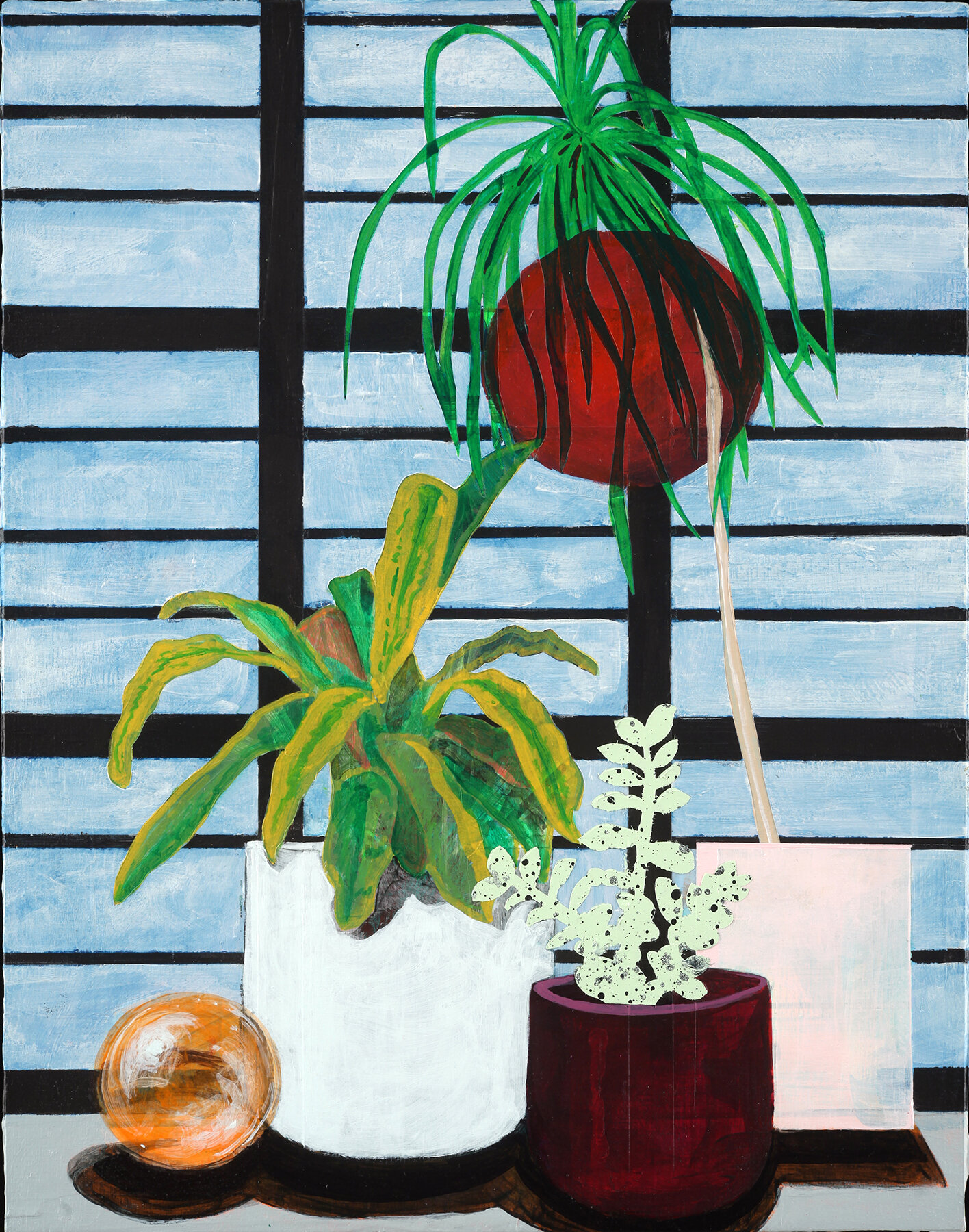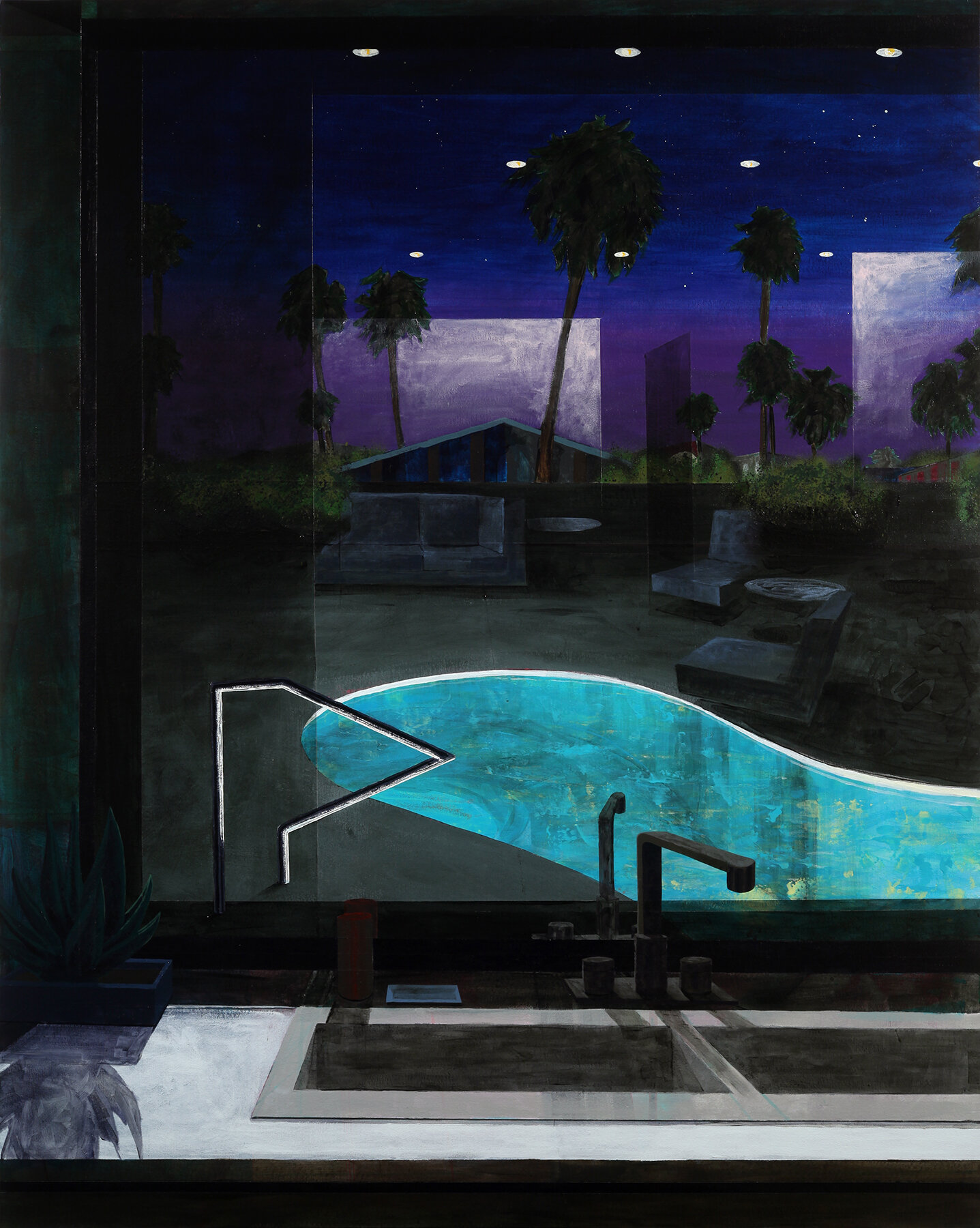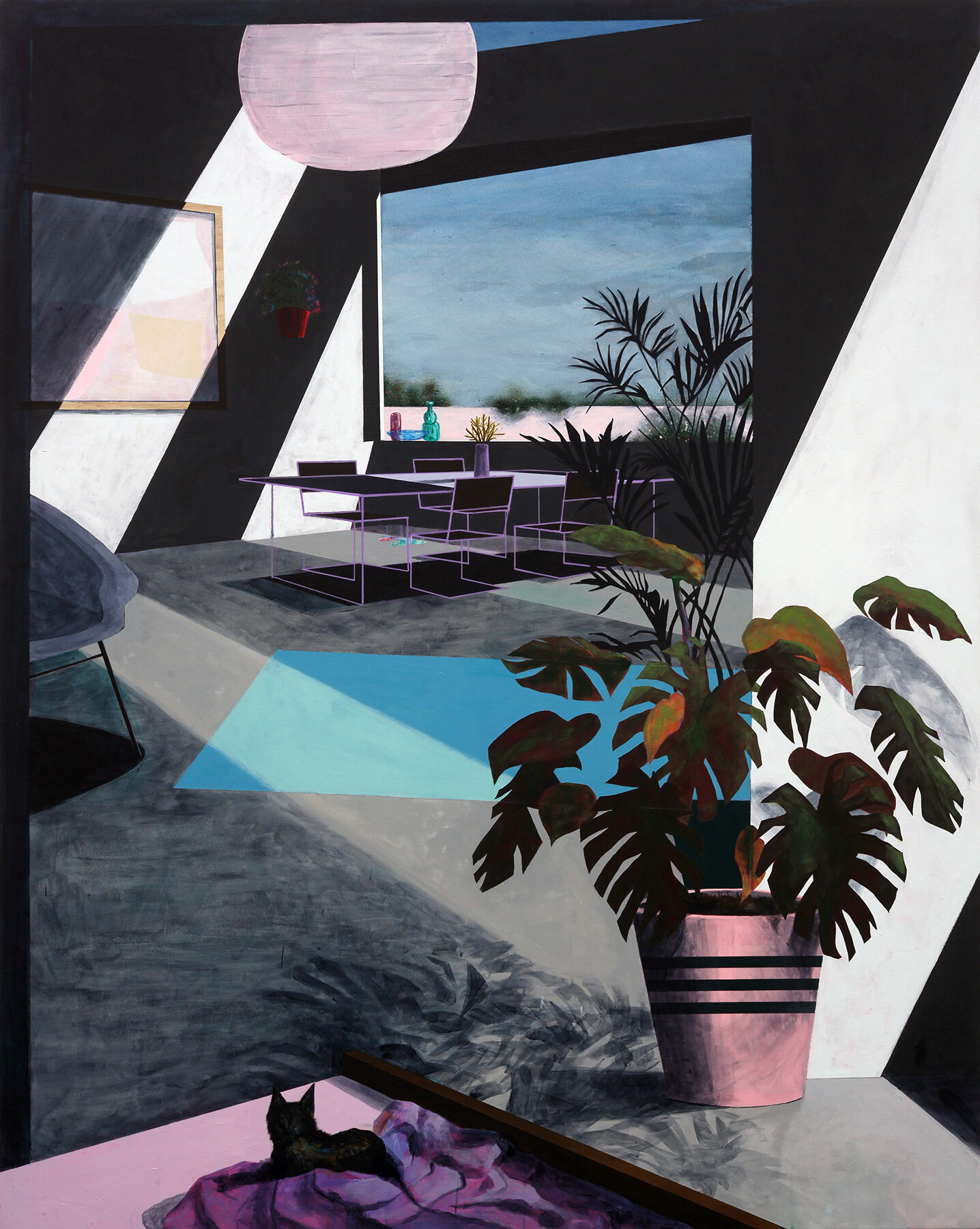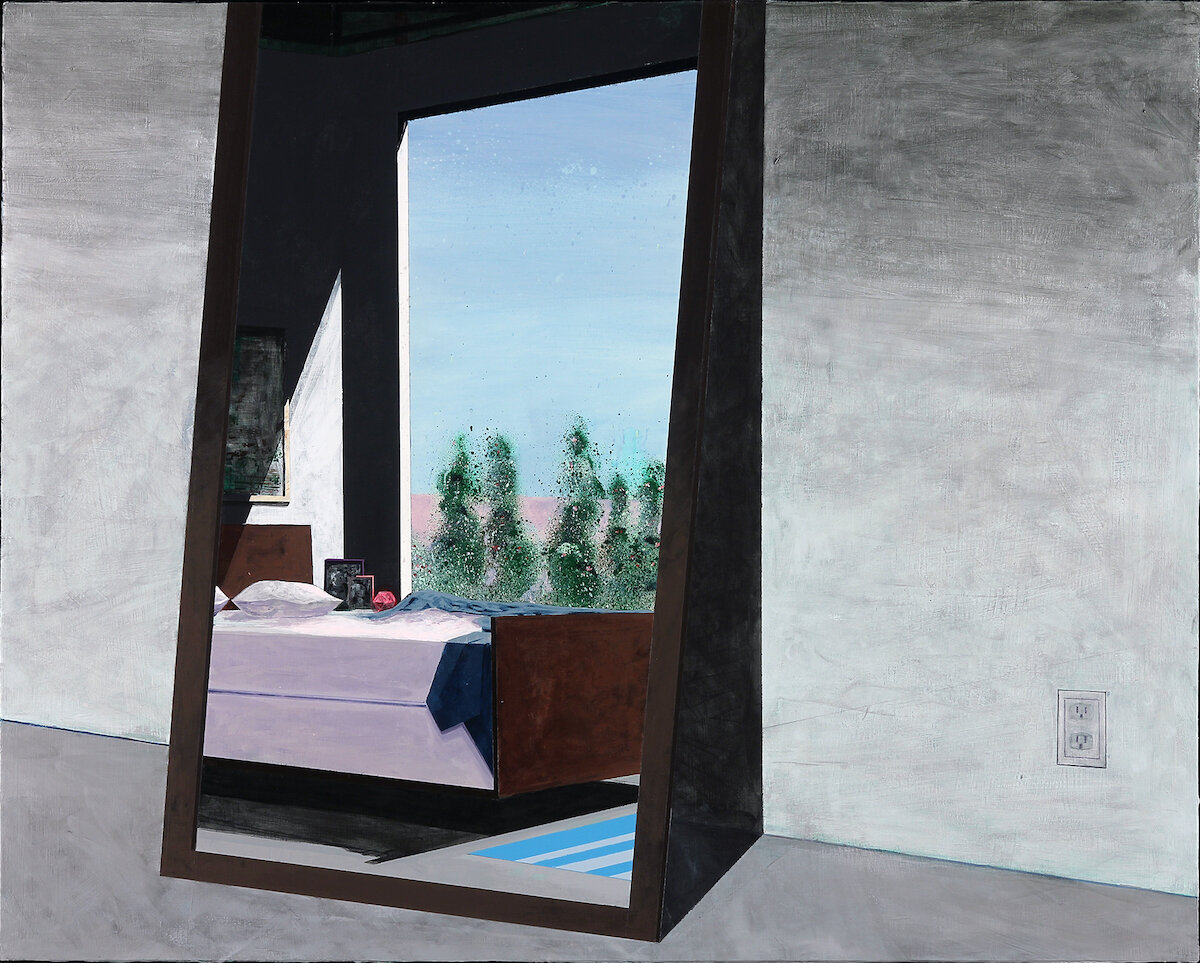Studio Portrait by Michael Cuffe.
Erik Parra
Born in El Paso, TX, Erik Richard Parra holds a BFA in painting from The University of Texas at Austin and an MFA in painting, completed while on fellowship at the University of Wisconsin—Madison. Currently based in San Francisco, Erik exhibits extensively in commercial galleries and museums in the bay area, nationally and internationally. His work has been published and favorably reviewed, notably by Christopher Knight in the LA Times. Additionally, Erik lectures in painting and drawing at the California College of the Arts, and garners residencies and awards. Most recently he was awarded an inaugural Liquitex Research Residency.
Can you tell us a bit about your background and where you grew up? In what ways have your early visual experiences and personal history led to art-making?
I was born into “the life”. My Father is an artist so I can’t really conceive of a time in my life in which I was not looking at and making art. I grew up on the United States-Mexico border, in the El Paso-Ciudad Juarez metroplex. This is basically one big sprawling international city divided roughly in half by a line on a map the roughly corresponds to the river. At one point this river had to be encased in concrete because it would often change course, which is not very convenient behavior for a boundary marker. Like that river, I grew up learning to move fluidly between two cultures, which never actually felt like anything more than moving through one big city. I wouldn’t really come to understand the personal and political ramifications of growing up in this milieu until I would go to college but it is easy to see how my experiences growing up there fostered my desire to engage with and unpack dichotomies, my desire to see multiple sides of a given issue and to want to communicate despite personal/language differences.
Additional factors that influenced my artmaking and life include my parent’s occupations and the house I grew up in. My dad was a painter and both of my parents were teachers, which means I’ve been drawing ever since I could hold a pencil. In fact, I have been keeping a formal sketchbook since the second grade. My mother taught Language Arts and my father taught Visual Art, so I grew up exposed to all manner of cartoons, books, music, film and culture, especially painting. Some of my earliest and most fond memories involve road trips for my father’s art exhibitions because this meant in addition to staying in a hotel, we got to see art museums and art galleries in other cities. Perhaps one of the most profoundly influential factors on me as a person and an artist has to be the house I was raised in. My parents’ house was unlike any other on my block and would now be referred to as Midcentury Modern, that is to say it was an open concept, post and beam construction with a glass wall, flat roof and a wedge-shaped vaulted, modern clear story. My life which I channel into my work, was literally and directly in a Bachelardian sense, shaped by the modernist programme.
Installation Shot from my Solo Exhibition titled History By Choice at Eleanor Harwood Gallery in San Francisco, CA in 2018.
Where are you currently based and what initially attracted you to working in this community? Are there any aspects of this place that have surfaced in your work?
I feel honored to say that I am currently based in San Francisco, CA. The Bay Area is one of the most naturally beautiful places on the planet. I initially fell in love with the city of San Francisco as a child. First through a book report I did in elementary school, on a book about “the 60’s” and later through my involvement with the skateboard, freestyle bike and punk rock communities. I wouldn’t move here though, until the late nineties, after I finished my undergraduate studies in painting at the University of Texas at Austin. There I was introduced to the painters Elmer Bischoff, Richard Diebenkorn and David Park, whose work I fell in love with, hard. So, I have always been attracted to the city’s cultural history, and that initially drew me out here, specifically with regards to painting. Having lived here for 13 years it’s hard to deny that the Bay Area informs my work. I am very interested in the intersection of architecture, city planning, film, music, philosophy, social justice and art history. One train of thought I am interested in and have been following since graduate school is the social ramifications of the post-war idea of white flight resulting from the establishment and growth of the American suburbs and how this effected and continues to effect American cities. As an artist living in one of the most expensive cities in the country I really think a lot about housing security and gentrification. In addition to concept the natural light, local color and natural/local floral diversity all make their way into my studio to inform my practice in unique ways. For instance, I often photograph plants that I find walking about the city to include them in compositions or perhaps it might be the color of a house that I put into a painting, San Francisco is just so visually rich and the beautiful quality of light here, plays such an important role.
Studio Shot with painting titled Outside In, in progress. This painting was displayed as part of my solo exhibition titled Insides Out at Eleanor Harwood Gallery in San Francisco, CA.
Can you tell us about your studio and what a typical day is like for you? Do you share space or ideas with other artists while working, or is it a more solitary routine?
I love my studio. I share a big subdivided bay in a huge warehouse, with a couple of other artists. Everyone has their own workspace so I am generally pretty isolated when I work which is my preference. Yet as a result, I love studio visits. I also have a circle of artist friends who I love and respect and with whom I have an ongoing dialogue to share ideas and solicit criticism. I often reach out to them for visits, phone chats or virtual studio visits. When I am working I love long periods of uninterrupted work preferably set to a loud soundtrack, mostly of music that most people find unlistenable with the occasional art/architecture/philosophy podcast thrown in for balance. I generally work on a lot of things at one time so I move freely between pieces and generally let the work drive itself. On any given day I have a loose plan of what I want to accomplish but if a different interest develops or I get stuck on an idea, I have both the freedom and room to move and problem solve while not sacrificing any production time.
What criteria do you follow for selecting materials? Do you prefer to maintain a narrow focus or work across diverse media? How do you navigate the limitations and possibilities that result from this path?
For my painting, drawing and collage practices I seek out materials that are high quality, archival, sustainable and locally sourced, where possible. When I work with sculptural forms or installation I generally try to work with recycled materials. As I have been getting older I find that I have been pairing down my material choices down.
For a long time, my drawing and painting practices combined different media to capitalize on a range of material expressive possibilities. For instance, a drawing might have graphite, watercolor and markers or ink wash with markers and graphite now when I draw I am working more strictly in one medium. Same thing for painting, I used to combine acrylic with oil and enamel or makers with acrylic but now, I am pretty much painting strictly in acrylic. I find the challenges in pairing down quite gratifying.
Double Nickels, Space Painting, 2020. Acrylic on canvas, 30 x 42”.
Can you walk us through your overall process? How would you describe your approach to manipulating materials? What about decision-making and editing?
I work from memory. I cull composition ideas from a near endless stream of Instagram photos, internet research, actual live art viewing, television and movies. Whenever a painting or a pictures composition interests me, I save a copy digitally in my phone, from there I’ll make rough thumbnail compositional sketches in my sketchbook working from the memory of those photos, not directly from the photos. The next step involves trying to create a drawing from the held memory of those initial sketches while developing the composition by responding to the marks I am making on the substrate, in real time, in an attempt to realize something similar to that sketch. From there I develop this idea into a painting, fully realized drawing, collage, installation etc. much the same way, by working between memory and responding to the marks I am making in real time.
Can you talk about some of the ongoing interests, imagery, and concepts that have informed your process and body of work over time? How do you anticipate your work progressing in the future?
Some of the themes and concepts that interest me and inform the work include, Light and dark and how these helps to create space, feeling and mood within the work. How we see, what we see. I am interested in unpacking Modernism and the effects of modernist narratives on contemporary society. Architecture as antagonist and sometime protagonist within these modern narratives. Film Noir and Horror fiction topes that inform formal choices related to composition and light.
Do you pursue any collaborations, projects, or careers in addition to your studio practice? If so, are there connections between the two?
I love unforced and natural collaborations so I do not really seek them out as such. If they develop naturally that is to say born through conversation between potential collaborators, I am game but I feel if they are forced then it is evident in the work and the work suffers. As for other projects I love books and printed art and am always trying to instigate zine, newspaper and publication type projects with folks but this can be challenging in a place like the Bay Area, where it seems everyone has three jobs in addition to a studio practice. In addition to my studio practice, I teach at the California College of the Arts and City College SF. My parents were teachers so it’s kind of came naturally to me but what is more important is the dialogue between the two. There is definitely a conversation between what happens in my personal studio and what happens in conversation with my students.
Rearview, 2017. Acrylic on panel, 24 x 30”.
As a result of the pandemic, many artists have experienced limited access to their studios or loss of exhibitions, income, or other opportunities. Has your way of working (or not working) shifted significantly during this time? Are there unexpected insights or particular challenges you’ve experienced?
I was able to keep working in my studio because my studio is in a big warehouse in a desolate, industrial section of San Francisco which often feels rather quiet generally but during the shelter in place it felt even more so. That is to say before the shelter in place I would see maybe five other people on any given day. That was a major factor in my feeling safe and continuing to work during the shelter in place order, which was a Godsend in terms of my personal mental health. So, the pandemic has been great for my daily practice of painting because well I have been able to paint every day and I feel very lucky in that regard.
In a time that seems to be marked by uncertainty, collective anxiety, and increasing social unrest, why do you think the perspectives and contributions of artists remain meaningful? Do you feel a natural relationship exists between your work (or the role artists play more broadly) and confronting established systems - of power, cultural institutions, or otherwise?
I think art is necessary, now more than ever. What else are you going to do when you are having an evening at home? You are watching a movie, listening to a podcast or music and looking at things on your screen like art and writing. First, the arts confirm our humanity. Second, it connects people through shared experience creating community and thus creating collective hope. The experience viewing art provides is invaluable generally but its vitality is magnified during times of duress and trauma. Additionally, the act of making art is psychically healing and productive both at the personal and professional level.
Can you share some of your recent influences? Are there specific works - from visual art, literature, film, or music - that are important to you?
Dark, (Television Series) Lovecraft Country, Raised by Wolves, Midsommar, Finn Juhl’s watercolors, and Harland Miller’s paintings.
Who are some contemporary artists you’re excited about? What are the best exhibitions you’ve seen in recent memory?
That’s a tough one because there are so many talented artists in the Bay Area alone but some of my favorite contemporary painters are:
Claire Sherman
Inka Essenhigh
Alison Schulnik
Lourdes Sanchez
Keith Tyson
Mircea Telega
Kerry James Marshall
Scott Anderson
As for recent exhibitions, Covid is obviously plays a factor but the last exhibition I saw before lockdown was a killer three-person exhibition at the Adobe Backroom Gallery here in San Francisco titled American Information Blackmarket Network Dotkom.”. It contained expressive graffiti influenced artworks and installation by Piper Layne Alan, Maybe Later. and Floyd Tangeman that literally seethed with a dark if not positive energy. That read as equal parts interrogation and posited solution.
My second most memorable exhibition in recent memory was a large teetering on the verge of overstuffed group exhibition at Micheal Kohn Gallery in LA titled Myselves and curated by Joshua Friedman. A group exhibition of this many artists should be overkill. Between the size of the space, exceptional talent and excellent curating the works in the exhibition breathe and converse about identity in a compelling and satisfying ways.
What are you working on in the studio right now? What’s coming up next for you?
I am excited to announce that I have just opened a solo exhibition of recent paintings at Eleanor Harwood Gallery in San Francisco. I am really excited about sharing this exhibition as it is my most personal and I like to think my best work thus far! Currently I am working on finishing up a site responsive, immersive painting installation at the Adobe Backroom Gallery. When I wrap that up I am going to get back into the works I started while in residence at the Iris Residency Project in Venice, where I was a resident artist for the month of September.









